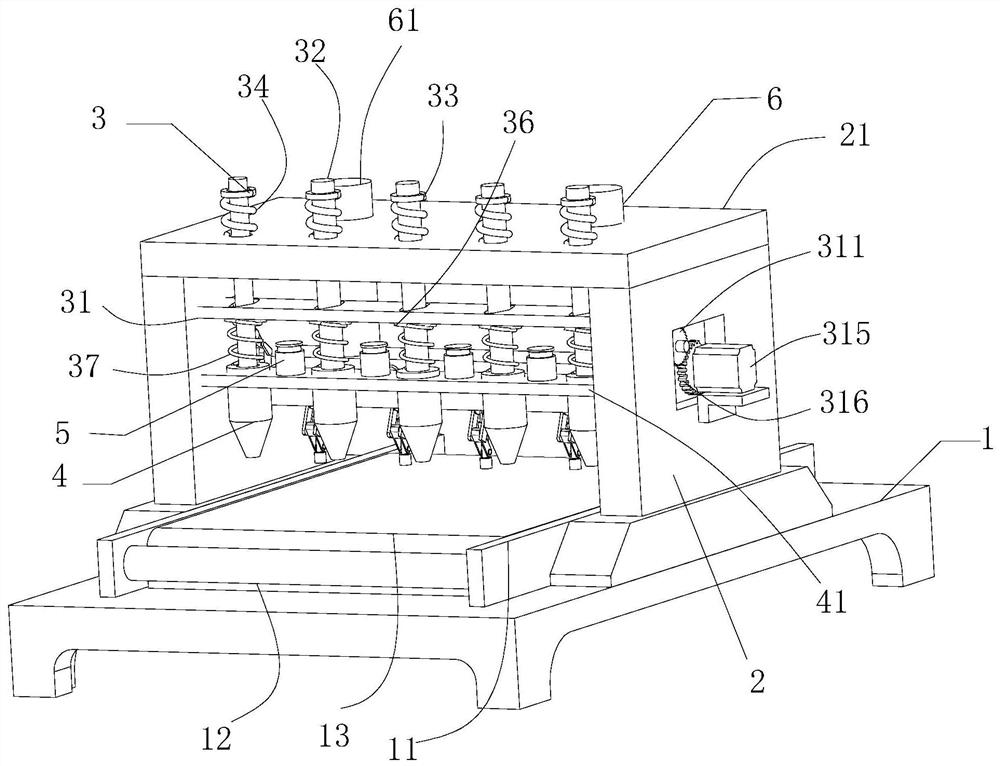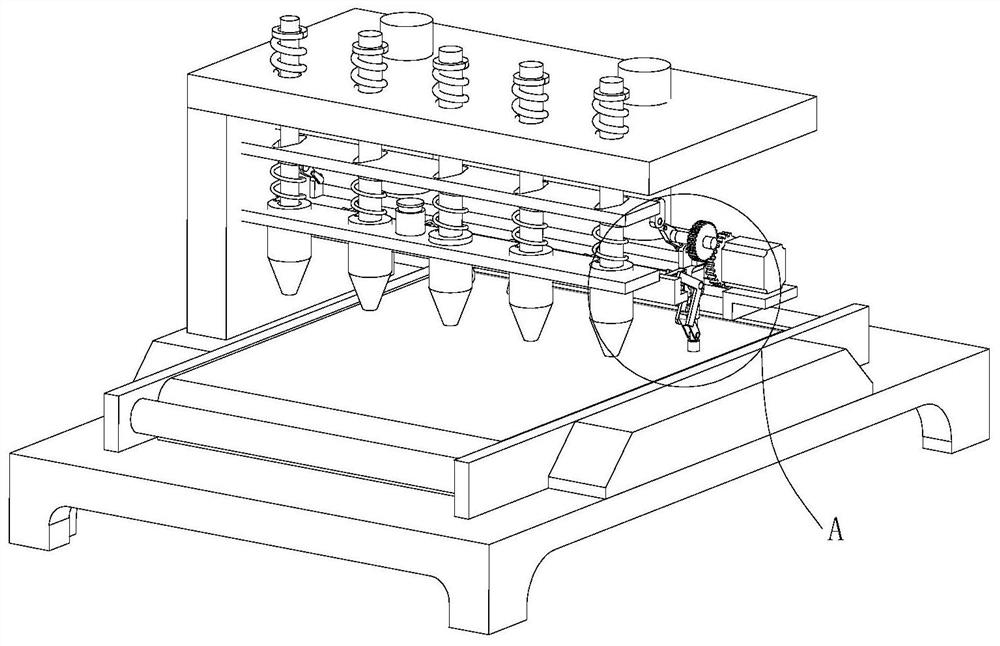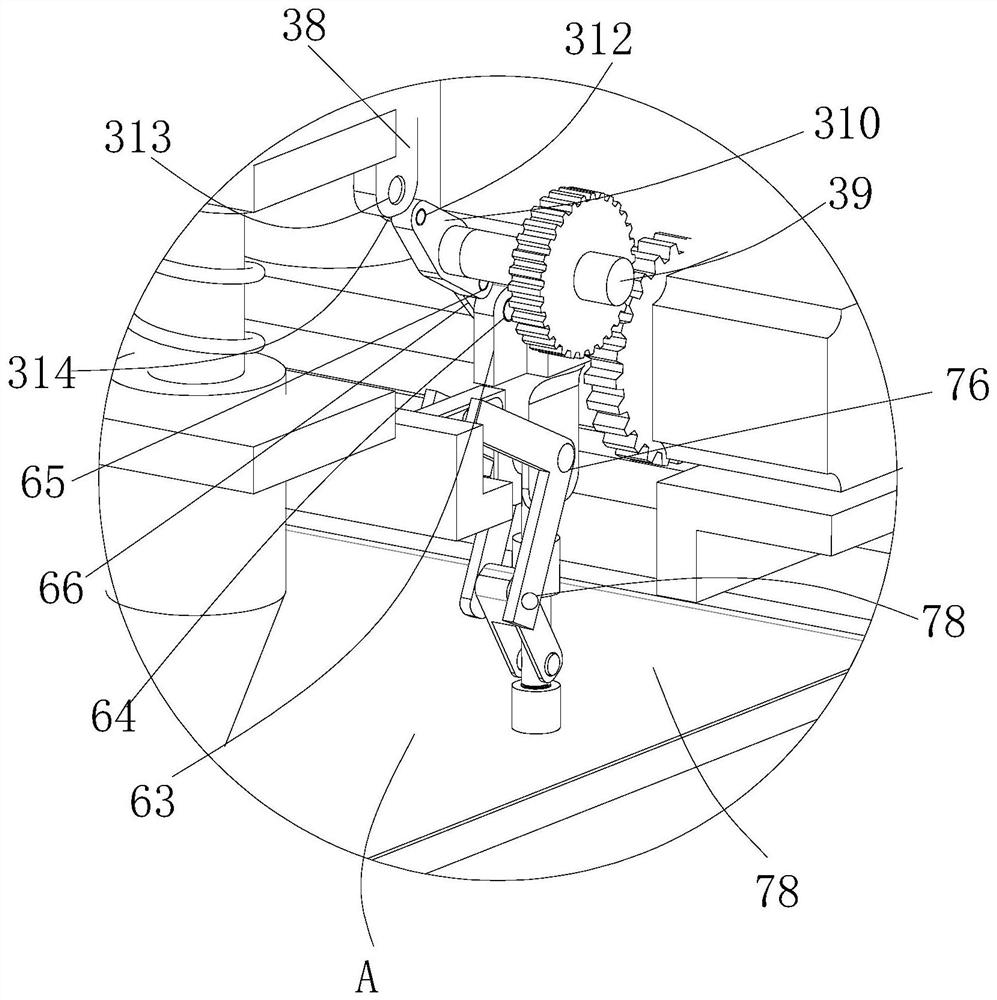Melt-blown activated carbon non-woven fabric production process
A technology of activated carbon non-woven fabric and production process, applied in the field of non-woven fabrics, can solve the problems of inability to absorb odor or odor, poor antibacterial adsorption, residual activated carbon particles, etc., and achieve good product diversity and good equipment compatibility. , The effect of good odor adsorption capacity
- Summary
- Abstract
- Description
- Claims
- Application Information
AI Technical Summary
Problems solved by technology
Method used
Image
Examples
Embodiment 1
[0027] A production process of melt-blown activated carbon non-woven fabrics, comprising the following steps:
[0028] (1) Preparation of the upper fabric: with PET slices as the main raw material, the dry nano-silver ion antibacterial masterbatch and PET slices are sent to the screw extruder for blending and melting to make a spinning melt, which is filtered through a melt filter Finally, it is sent into the spinning box through the melt pipeline, and is metered by the metering pump. The spinning assembly in the spinning box will spin, cool, draw, and coil the blended melt to obtain PET antibacterial filaments, nano-silver The content of the ionic antibacterial masterbatch is 3-8wt%, and the filament is woven into a knitted fabric through a knitting machine; then, the lower surface of the knitted fabric is coated with glue to form the first coating glue by using a hidden powder gluer , making the first coating glue into a circular shape at regular intervals, distributed on th...
Embodiment 2
[0040] (1) Preparation of the upper fabric: with PET slices as the main raw material, the dry nano-silver ion antibacterial masterbatch and PET slices are sent to the screw extruder for blending and melting to make a spinning melt, which is filtered through a melt filter Finally, it is sent into the spinning box through the melt pipeline, and is metered by the metering pump. The spinning assembly in the spinning box will spin, cool, draw, and coil the blended melt to obtain PET antibacterial filaments, nano-silver The content of ionic antibacterial masterbatch is 6wt%, and described filament is woven into knitted fabric through knitting machine; Utilize hidden powder type gluing machine to smear glue on the lower surface of described knitted fabric to form the first coating glue then, make The first coating glue is formed into regularly spaced circles, distributed on the lower surface of the knitted fabric, and the coating area of the first coating glue accounts for 50% of th...
Embodiment 3
[0046] (1) Preparation of the upper fabric: with PET slices as the main raw material, the dry nano-silver ion antibacterial masterbatch and PET slices are sent to the screw extruder for blending and melting to make a spinning melt, which is filtered through a melt filter Finally, it is sent into the spinning box through the melt pipeline, and is metered by the metering pump. The spinning assembly in the spinning box will spin, cool, draw, and coil the blended melt to obtain PET antibacterial filaments, nano-silver The content of ionic antibacterial masterbatch is 8wt%, and described filament is woven into knitted fabric through knitting machine; Utilize hidden powder type gluing machine to smear glue on the lower surface of described knitted fabric to form the first coating glue then, make The first coating glue is formed into regularly spaced circles, distributed on the lower surface of the knitted fabric, and the coating area of the first coating glue accounts for 70% of th...
PUM
| Property | Measurement | Unit |
|---|---|---|
| pore size | aaaaa | aaaaa |
| pore size | aaaaa | aaaaa |
| pore size | aaaaa | aaaaa |
Abstract
Description
Claims
Application Information
 Login to View More
Login to View More - R&D
- Intellectual Property
- Life Sciences
- Materials
- Tech Scout
- Unparalleled Data Quality
- Higher Quality Content
- 60% Fewer Hallucinations
Browse by: Latest US Patents, China's latest patents, Technical Efficacy Thesaurus, Application Domain, Technology Topic, Popular Technical Reports.
© 2025 PatSnap. All rights reserved.Legal|Privacy policy|Modern Slavery Act Transparency Statement|Sitemap|About US| Contact US: help@patsnap.com



